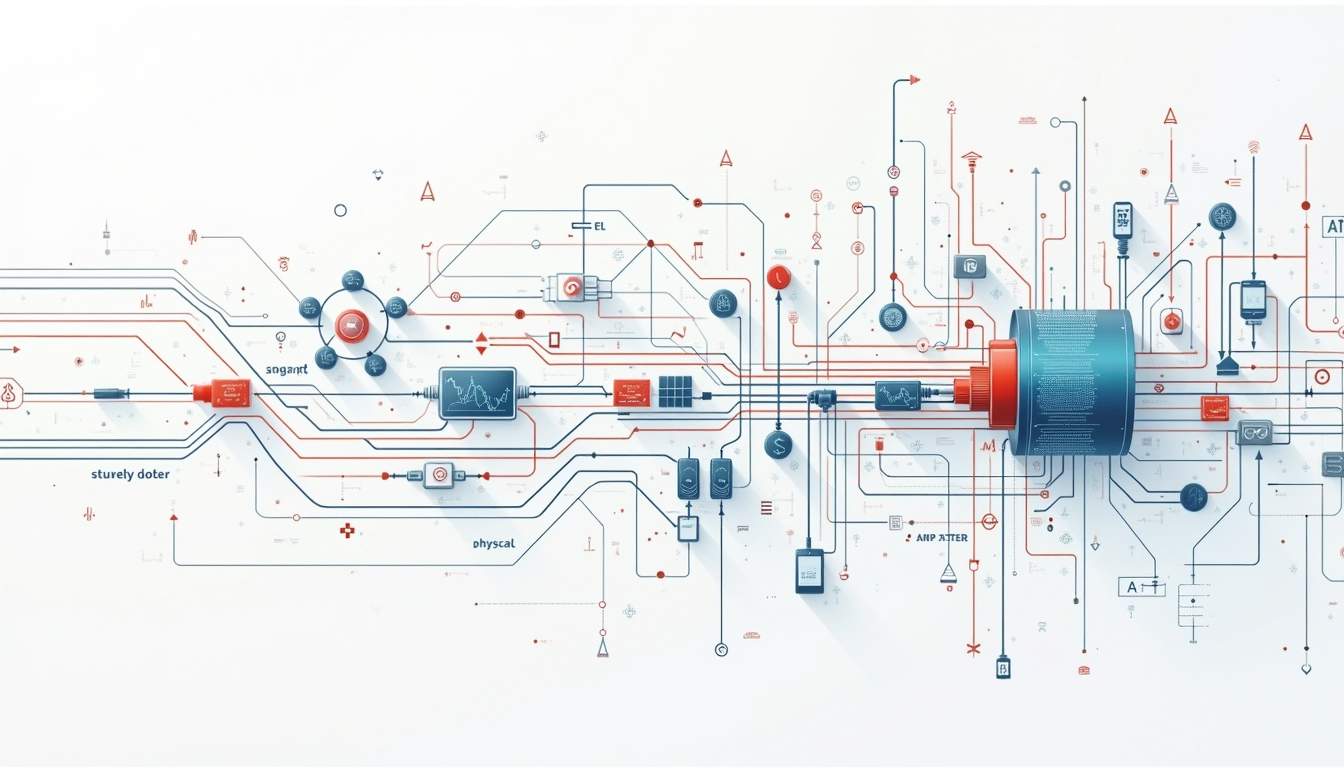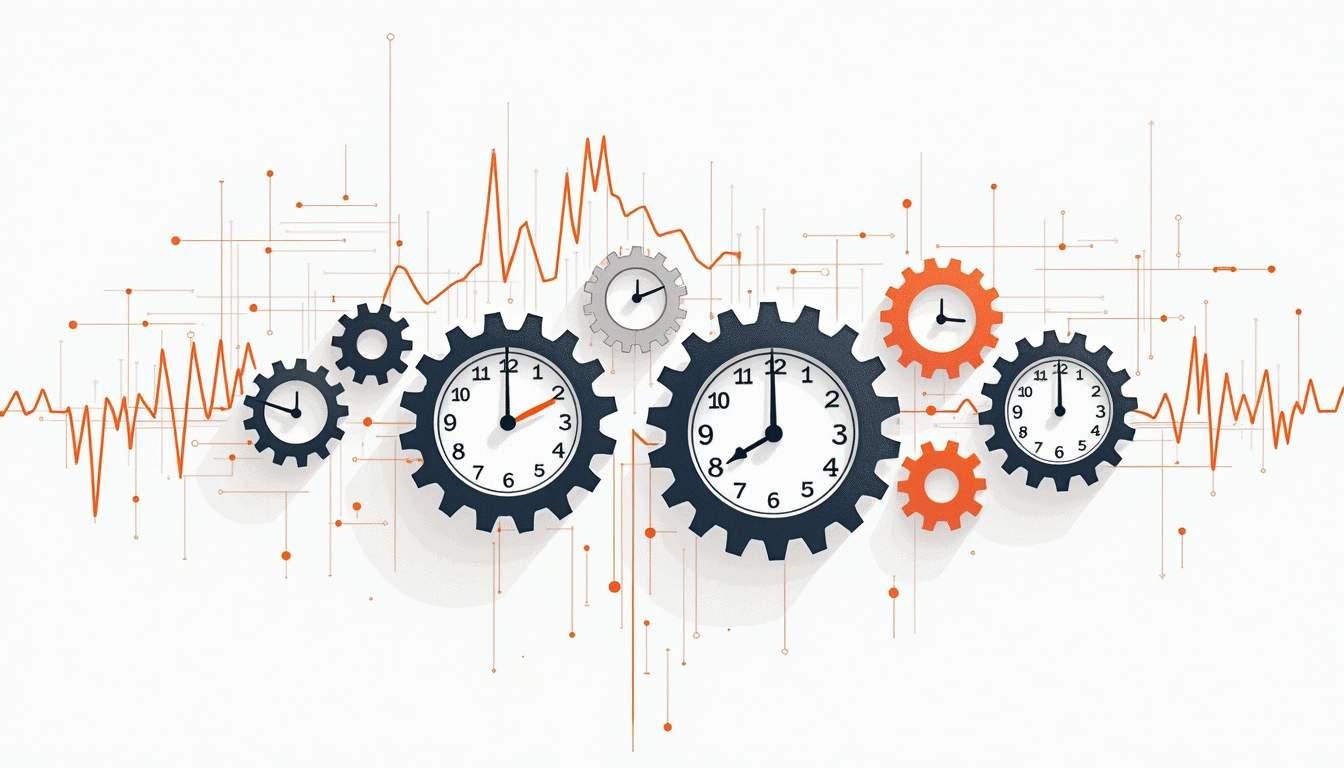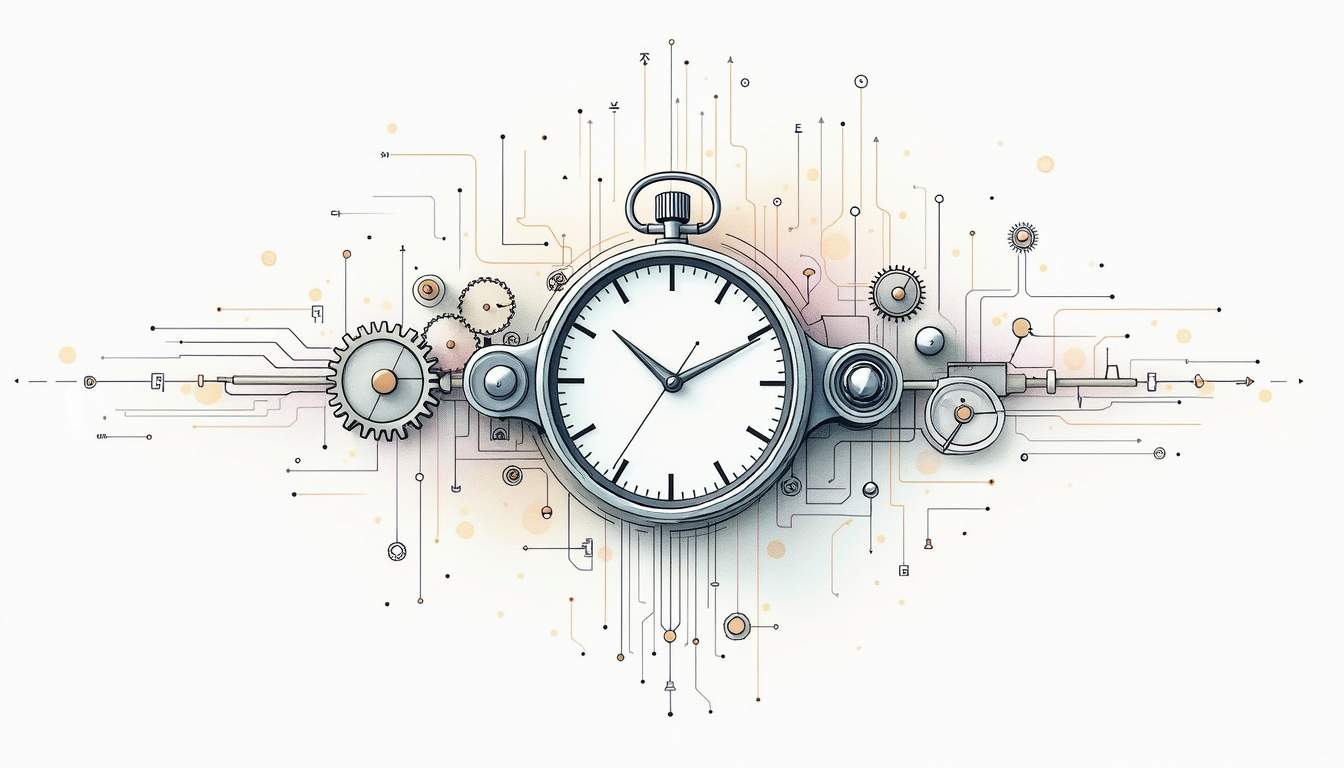Cyber-Physical Systems (CPS) represent a convergence of the physical and digital worlds, integrating computing, networking, and physical processes. As these systems become increasingly prevalent in various sectors, including manufacturing, healthcare, and transportation, the importance of timing and synchronization cannot be overstated. This article delves into the critical role that timing and synchronization play in the design and operation of CPS, exploring their implications for system performance, reliability, and safety.
Understanding Cyber-Physical Systems
Cyber-Physical Systems are engineered systems that are built from, and depend upon, the seamless integration of computational algorithms with physical components. These systems can range from simple sensor networks to complex autonomous vehicles. The interaction between the cyber and physical components is what makes CPS unique, but it also introduces challenges, particularly related to timing and synchronization.

The Components of CPS
A CPS typically consists of sensors, actuators, and control algorithms that work together to monitor and manage physical processes. Sensors collect data from the environment, while actuators perform actions based on that data. The control algorithms process the information and decide how to respond, creating a feedback loop that is essential for system functionality.
Each of these components operates on its own timeline, which can lead to discrepancies if not properly synchronized. For instance, if a sensor collects data too slowly or an actuator responds too quickly, the entire system’s performance can be compromised. This is particularly evident in industrial automation, where precise timing can mean the difference between optimal production and costly errors. In such settings, the integration of CPS can enhance efficiency, reduce waste, and improve safety by allowing for real-time monitoring and adjustments to be made seamlessly.
Challenges in Timing and Synchronization
One of the primary challenges in CPS design is ensuring that all components operate in harmony. Timing discrepancies can arise from various sources, including network latency, clock drift, and environmental factors. These discrepancies can lead to data inconsistencies, delayed responses, and even system failures.
Moreover, as CPS become more complex, the need for precise synchronization becomes even more critical. In applications such as autonomous vehicles, a slight delay in data processing can lead to catastrophic outcomes. Therefore, understanding and mitigating these timing challenges is essential for the successful deployment of CPS. The integration of advanced synchronization techniques, such as time-triggered protocols and distributed algorithms, can help address these issues. Additionally, the use of machine learning algorithms to predict and compensate for timing discrepancies is an emerging area of research that holds promise for enhancing the reliability of CPS in dynamic environments.
The Importance of Timing in CPS
Timing is a fundamental aspect of CPS that influences nearly every facet of system operation. The ability to accurately measure and respond to time-sensitive events is crucial for maintaining system integrity and performance.
Real-Time Processing
Many CPS applications require real-time processing capabilities to function effectively. This means that the system must be able to process data and respond to events within strict time constraints. For example, in industrial automation, a delay in processing sensor data could result in machinery operating incorrectly, leading to production downtime or even safety hazards.
Real-time processing is often achieved through the use of specialized hardware and software designed to prioritize time-sensitive tasks. This ensures that critical operations are executed promptly, reducing the risk of errors and improving overall system reliability.
Event-Driven Systems
CPS often operate in an event-driven manner, where actions are triggered by specific events or conditions. In such systems, the timing of these events is paramount. For instance, in smart grids, the timing of energy consumption and generation events must be carefully coordinated to maintain system stability.
Event-driven architectures rely on precise timing mechanisms to ensure that events are processed in the correct order and within the required time frames. This not only enhances system responsiveness but also improves the accuracy of data interpretation and decision-making.
Synchronization Techniques in CPS
To address the challenges of timing and synchronization, various techniques have been developed. These techniques aim to align the operation of different components within a CPS, ensuring that they work together seamlessly.

Clock Synchronization Protocols
Clock synchronization is a critical aspect of CPS design. Protocols such as the Network Time Protocol (NTP) and Precision Time Protocol (PTP) are commonly used to synchronize clocks across distributed systems. These protocols help minimize clock drift and ensure that all components operate on a consistent time reference.
Implementing effective clock synchronization can significantly enhance the performance of CPS by reducing timing discrepancies. This is particularly important in applications where precise timing is essential, such as in telecommunications and financial transactions.
Time-Triggered Architectures
Time-triggered architectures (TTA) are another approach to synchronization in CPS. In a TTA, system actions are scheduled based on a global clock, allowing for deterministic behavior. This means that the timing of events is predictable, which can simplify system design and improve reliability.
TTAs are particularly beneficial in safety-critical applications, where timing errors can have severe consequences. By ensuring that all components adhere to a fixed schedule, TTAs help mitigate the risks associated with timing discrepancies.
Impact of Timing and Synchronization on System Performance
The performance of a CPS is heavily influenced by its timing and synchronization mechanisms. Systems that are well-synchronized tend to exhibit higher reliability, efficiency, and overall performance.

Improving Reliability
Reliability is a key concern in CPS design, particularly in applications where failure can have dire consequences. Proper timing and synchronization can significantly enhance system reliability by ensuring that components operate in unison. This reduces the likelihood of errors and increases the system’s ability to respond to unexpected events.
For example, in healthcare applications, synchronized medical devices can work together to monitor patient vitals and respond to emergencies more effectively. This level of coordination can be life-saving, highlighting the critical nature of timing and synchronization in CPS.
Enhancing Efficiency
Efficiency is another area where timing and synchronization play a vital role. In manufacturing systems, for instance, synchronized operations can lead to smoother workflows and reduced downtime. By ensuring that machines and processes are aligned, organizations can optimize production schedules and minimize waste.
Moreover, efficient synchronization can lead to energy savings, as systems can operate at optimal levels without unnecessary delays or overlaps. This not only benefits the bottom line but also contributes to sustainability efforts.
Case Studies: Timing and Synchronization in Action
Real-world examples illustrate the importance of timing and synchronization in CPS design and operation. These case studies highlight how effective synchronization can lead to improved outcomes across various industries.
Autonomous Vehicles
In the realm of autonomous vehicles, timing and synchronization are paramount. These vehicles rely on a multitude of sensors to navigate their environment, and any delay in data processing can result in dangerous situations. For instance, if a vehicle’s sensors detect an obstacle but the processing unit is delayed in responding, it could lead to a collision.
To mitigate this risk, autonomous vehicles employ advanced synchronization techniques, including real-time data processing and clock synchronization protocols. This ensures that all components work in harmony, allowing for rapid response to dynamic driving conditions.
Smart Grids
Smart grids represent another domain where timing and synchronization are critical. These systems integrate renewable energy sources, such as solar and wind, with traditional power generation methods. The challenge lies in synchronizing energy production and consumption to maintain grid stability.
By utilizing precise timing mechanisms and synchronization protocols, smart grids can effectively manage energy flow, reducing the risk of blackouts and optimizing resource utilization. This not only enhances the reliability of the power supply but also supports the transition to sustainable energy sources.
Future Directions in CPS Timing and Synchronization
As technology continues to evolve, the importance of timing and synchronization in CPS will only grow. Emerging trends and advancements present both challenges and opportunities for improving synchronization techniques.
5G and Beyond
The rollout of 5G technology promises to revolutionize CPS by providing ultra-reliable low-latency communication. This advancement will enhance the ability to synchronize components across vast distances, enabling real-time data exchange and decision-making. As a result, CPS will become more responsive and capable of handling complex tasks.
However, the increased complexity of 5G networks also introduces new synchronization challenges. Ensuring that all components remain synchronized in a high-speed environment will require innovative solutions and robust protocols.
Machine Learning and AI
Machine learning and artificial intelligence are also poised to impact timing and synchronization in CPS. These technologies can analyze vast amounts of data to predict timing discrepancies and optimize synchronization strategies. By leveraging AI, CPS can become more adaptive, learning from past experiences to improve future performance.
As CPS become more intelligent, the integration of machine learning will enable systems to self-correct timing issues and enhance overall reliability. This could lead to significant advancements in safety-critical applications, where precision is paramount.
Conclusion
Timing and synchronization are critical components of Cyber-Physical Systems, influencing their design, operation, and overall performance. As these systems continue to evolve, the need for precise timing mechanisms and synchronization techniques will only become more pronounced. By addressing the challenges associated with timing and synchronization, organizations can unlock the full potential of CPS, leading to safer, more efficient, and more reliable systems.
In a world increasingly reliant on the integration of digital and physical processes, understanding the critical role of timing and synchronization is essential. As technology advances, so too will the methods for achieving synchronization, paving the way for the next generation of Cyber-Physical Systems.
Take Control of Your CPS with Cybersort
Understanding the pivotal role of timing and synchronization in Cyber-Physical Systems is just the beginning. With Cybersort, you can take the next step towards mastering your plant’s digital infrastructure. Gain the visibility and control needed to ensure safer operations, robust cybersecurity, and a successful digital transformation. Don’t let timing discrepancies hold you back. Book a discovery call today and see how Cybersort can enhance the performance and reliability of your CPS.


